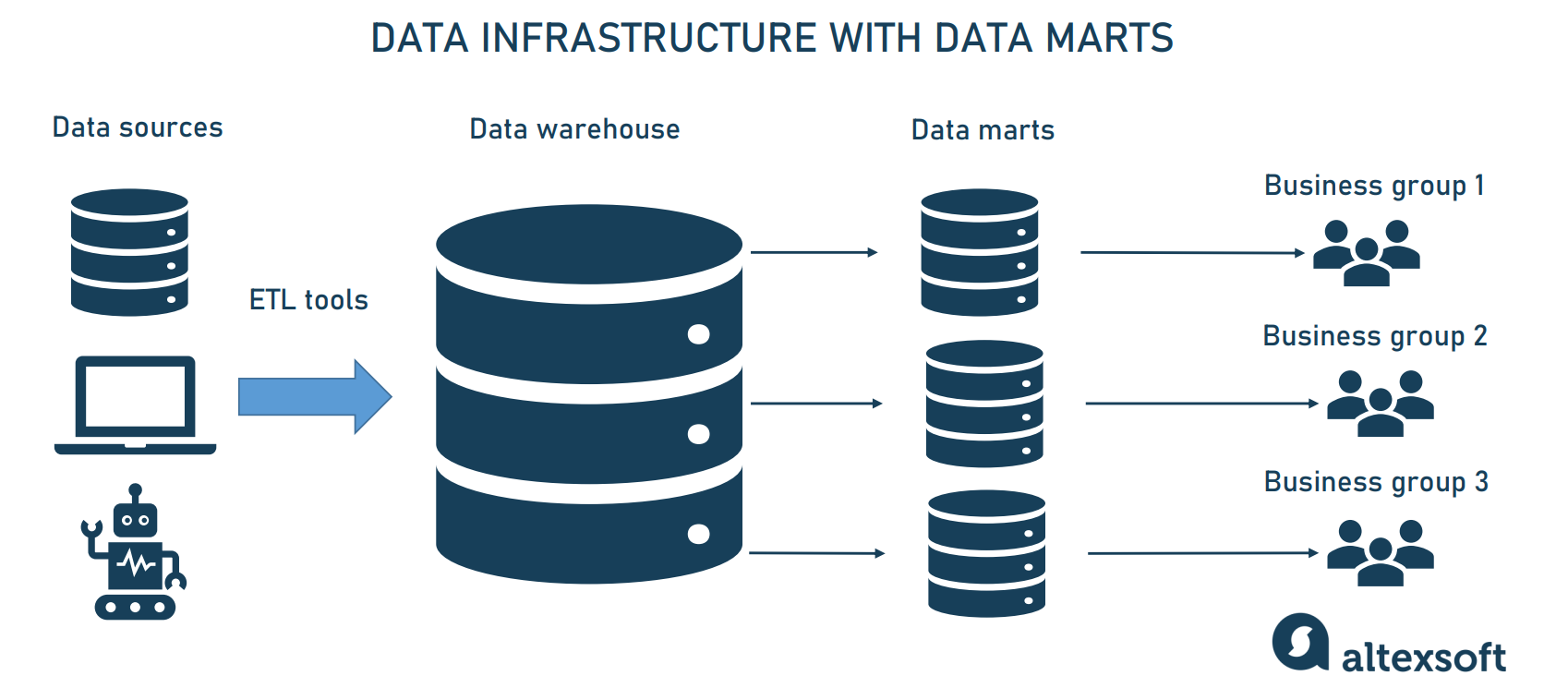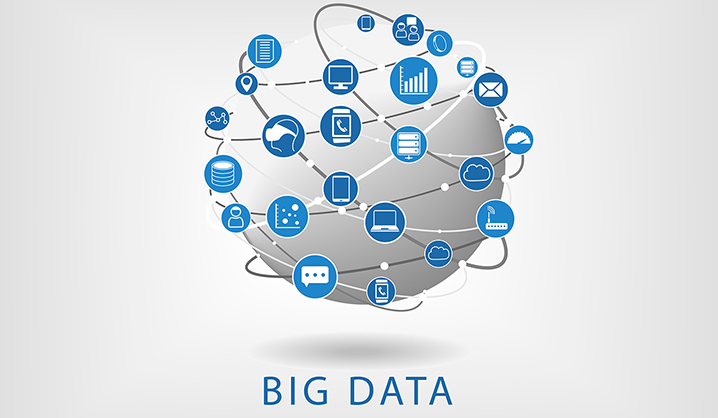Data drives modern business decisions. Business Intelligence (BI) tools are essential for this process.
In a world teeming with data, making the right decisions can be challenging. Business Intelligence tools help by transforming raw data into meaningful insights. These tools offer a way to analyze, visualize, and interpret data, making it easier for businesses to understand their performance and opportunities.
Whether you are a small business or a large enterprise, the right BI tools can enhance your decision-making process. In this post, we will explore some of the top BI tools available. These tools are the best picks for anyone looking to make data-driven decisions. Ready to dive in? Let’s get started!

Credit: www.altexsoft.com
Introduction To Business Intelligence Tools
Discover top business intelligence tools for data-driven decision-making. These tools help businesses make better choices using data insights. Explore options like Tableau, Power BI, and Qlik Sense for efficient data analysis.
### Introduction to Business Intelligence Tools Business Intelligence (BI) tools are essential for modern businesses. They help you make sense of complex data and turn it into actionable insights. Imagine having a dashboard that shows you everything you need to know about your company in real-time. That’s what BI tools can do. They simplify data analysis, making it easier for you to make informed decisions. ### Importance of Data-Driven Decisions Data-driven decisions are crucial in today’s fast-paced business environment. They help you stay ahead of the competition by providing accurate information. When you rely on data, your decisions are backed by facts, not just intuition. This reduces risks and increases success rates. Have you ever made a decision based on a hunch and regretted it later? BI tools ensure that doesn’t happen. They give you the confidence to make choices that are statistically sound. ### Evolution of Business Intelligence BI tools have come a long way. Initially, they were complex and required specialized knowledge. Now, they’re user-friendly and accessible to everyone. Think about the first time you used a smartphone. It was probably confusing at first, but now it’s second nature. BI tools have undergone a similar transformation. They are now designed to be intuitive and easy to use. Over the years, features like real-time analytics, AI integration, and cloud-based solutions have been added. These advancements make BI tools more powerful and versatile than ever.
Credit: online.hbs.edu
Criteria For Choosing Bi Tools
Selecting the right BI tools helps make smart decisions using data. Consider ease of use, integration, and data visualization features. User support and cost also play key roles in choosing the best tools.
Choosing the right Business Intelligence (BI) tool can be a game-changer for your organization. The right tool can help you make data-driven decisions that propel your business forward. However, with so many options available, how do you decide which one is the best fit for you? Here are some crucial criteria to consider when selecting a BI tool.Ease Of Use
Ease of use should be at the top of your list. If a tool is too complicated, your team won’t use it effectively. Look for a user-friendly interface that allows even non-technical users to generate reports and analyze data. I once worked with a BI tool that required extensive training just to create basic dashboards. It was a nightmare. Opt for something intuitive to maximize its potential.Integration Capabilities
Integration capabilities are another crucial factor. Your BI tool should seamlessly connect with your existing systems. Ensure that it can pull data from various sources like CRM software, databases, and marketing platforms. Imagine the frustration of manually importing data every time you need a report. Automation is key for efficiency.Scalability
Scalability is vital as your business grows. Your BI tool should grow with you. Select a tool that can handle increasing volumes of data without sacrificing performance. I once consulted for a company that outgrew their BI tool within a year. They had to switch to a new system, which was both costly and time-consuming. Avoid this by planning for the future. These criteria can help you narrow down your options and find a BI tool that meets your needs. What’s the most important feature you look for in a BI tool? Share your thoughts in the comments!Microsoft Power Bi
When it comes to data-driven decision-making, Microsoft Power BI stands out as one of the most powerful tools available. It brings your data to life with interactive dashboards and reports. Whether you’re a business owner, data analyst, or decision-maker, Power BI has something valuable to offer.
Key Features
Power BI offers a range of features that cater to different data needs. Its drag-and-drop interface makes it easy for users to create visualizations without any coding knowledge. The tool also supports a wide variety of data sources, from Excel spreadsheets to cloud-based services like Azure and Google Analytics.
Another standout feature is its real-time data access. This ensures that you always have the most current information at your fingertips, enabling timely decision-making. Additionally, Power BI’s AI capabilities help you discover insights automatically, reducing the time spent on data analysis.
Pros And Cons
Like any tool, Power BI has its strengths and weaknesses. One of its biggest pros is its user-friendly interface. Even if you are not tech-savvy, you can easily create detailed reports.
On the downside, Power BI’s free version has limitations. For instance, it lacks advanced collaboration features and has restricted data storage.
Another potential drawback is its performance with very large datasets. Users may experience slowdowns, which can be frustrating during critical times.
Ideal Use Cases
Power BI is ideal for small to medium-sized businesses looking to get more out of their data. Its affordability and ease of use make it accessible for businesses without dedicated IT departments.
It’s also perfect for data-driven departments within larger organizations. Marketing teams can track campaign performance, while sales departments can monitor sales pipelines in real time.
Have you ever struggled with making sense of your data? Power BI could be your solution. It can help you turn complex data into actionable insights, guiding your business decisions. So, why not give it a try and see how it can transform your data strategy?
What are your thoughts on using Power BI for your business? Feel free to share your experiences in the comments below!
Tableau
Tableau stands out as a top business intelligence tool. It helps in visualizing data for better decision-making. Its user-friendly interface makes it easy for beginners.
Tableau is a powerhouse in the world of Business Intelligence (BI) tools. It’s renowned for its robust features that help businesses turn raw data into insightful visualizations. If you’re looking to enhance your data-driven decision-making process, Tableau is a tool worth considering.Visualization Capabilities
Tableau excels in creating stunning visualizations that are not only informative but also easy to understand. You can transform complex data sets into interactive graphs, charts, and maps. You don’t need to be a data scientist to use it. The drag-and-drop interface makes it accessible to everyone. Plus, its ability to handle large data sets without compromising performance is a big plus.User Community
One of Tableau’s strongest assets is its vibrant user community. This community offers a treasure trove of resources, from forums and user groups to online courses and tutorials. If you ever hit a snag, you can turn to thousands of users who are ready to help. This kind of support can be invaluable when you’re trying to solve a tricky problem or learn a new feature.Integration Options
Tableau offers seamless integration with a variety of data sources. Whether you’re pulling data from SQL databases, cloud services like Google Analytics, or even Excel spreadsheets, Tableau makes it easy. This flexibility allows you to consolidate all your data in one place. You can then analyze it holistically, leading to more informed business decisions. Have you ever struggled with making sense of your data? Tableau might be the solution you’ve been looking for.Qlik Sense
Qlik Sense is a powerful business intelligence tool that stands out for its intuitive interface and robust capabilities. It enables users to make data-driven decisions with ease. Whether you are a data analyst or a business executive, Qlik Sense has something valuable to offer.
Associative Engine
The Associative Engine is the heart of Qlik Sense. It allows you to explore data from all angles without restrictions. Unlike traditional query-based tools, it lets you see associations across your data effortlessly.
Imagine you are analyzing sales data. Instead of being limited to predefined paths, you can freely explore how different factors like time, region, and product type relate to each other. This flexibility can reveal insights that you might have otherwise missed.
Self-service Analytics
Qlik Sense empowers you with self-service analytics. You don’t need to rely on IT teams to generate reports. You can create your own visualizations and dashboards.
Have you ever felt frustrated waiting for a custom report? With Qlik Sense, you can drag and drop data to build the visualizations you need. This speeds up decision-making and allows you to be more agile in your role.
Deployment Flexibility
One of the standout features of Qlik Sense is its deployment flexibility. You can deploy it on-premise, in the cloud, or in a hybrid environment. This makes it adaptable to your organization’s needs.
Consider a scenario where your team is distributed across different locations. Qlik Sense’s cloud option ensures everyone has access to the same data and insights in real-time. This can significantly improve collaboration and productivity.
Which of these features do you think would benefit your organization the most? Explore Qlik Sense and see how it can transform your data-driven decision-making process.
Looker
Looker is a powerful business intelligence tool designed for data-driven decision making. It helps businesses visualize and analyze data effectively. With Looker, companies can turn data insights into actionable strategies.
Data Modeling
Looker’s data modeling capabilities are impressive. It uses LookML, a unique modeling language. LookML simplifies complex data relationships. It allows users to create reusable data models. These models can be shared across the organization. This ensures data consistency and accuracy. Users can easily define metrics and dimensions. This helps in generating precise reports.
Collaboration Tools
Looker enhances collaboration within teams. It provides tools for sharing data insights. Users can create dashboards and reports. These can be shared with team members instantly. It supports data-driven discussions. Looker also allows setting up alerts. These alerts notify teams about critical changes in data. This keeps everyone informed and aligned. The platform integrates with popular communication tools. This makes collaboration seamless.
Customization
Looker offers extensive customization options. Users can tailor dashboards to meet specific needs. It allows adding custom filters and visualizations. This makes data analysis more relevant. Looker supports embedding reports into other applications. Businesses can also customize access controls. This ensures data security and compliance. The platform’s flexibility helps cater to diverse business requirements.
Sap Businessobjects
SAP BusinessObjects is one of the leading business intelligence tools available today. It is designed to help organizations make sense of their data and make informed decisions. If you need an all-in-one solution for enterprise reporting, data analysis, and performance management, SAP BusinessObjects might be your best bet.
Enterprise Reporting
Enterprise reporting is one of the standout features of SAP BusinessObjects. It allows you to create detailed reports that can be shared across your organization. These reports are customizable, so you can tailor them to meet specific needs.
Imagine having the ability to generate a monthly sales report in minutes, with just a few clicks. SAP BusinessObjects makes this possible. It not only saves time but also ensures accuracy, which is crucial for making data-driven decisions.
Security Features
Security is a major concern when dealing with business data. SAP BusinessObjects offers robust security features to protect your information. You can control who has access to certain data and ensure that sensitive information is kept safe.
For example, you can set different permission levels for different users. This means that while your finance team can access detailed financial reports, your marketing team might only see high-level summaries. This level of control helps prevent data breaches and unauthorized access.
Performance
Performance is another area where SAP BusinessObjects excels. The tool is designed to handle large volumes of data without slowing down. Whether you are dealing with millions of rows of data or complex calculations, SAP BusinessObjects can manage it efficiently.
Have you ever had to wait for ages for a report to generate? With SAP BusinessObjects, those days are over. The tool uses advanced algorithms to process data quickly, so you get your insights faster.
Are you ready to transform your data into actionable insights with SAP BusinessObjects? Its enterprise reporting, security features, and performance capabilities make it a top choice for data-driven decision-making. Give it a try and see how it can benefit your organization.

Credit: online.hbs.edu
Comparative Analysis
Choosing the right business intelligence tool can transform your decision-making process. This comparative analysis highlights key factors to consider. These include cost, user experience, and community support. Let’s dive into each aspect.
Cost Comparison
Cost is a crucial factor for businesses of all sizes. Some tools have a higher initial cost but lower long-term expenses. Others might offer affordable entry-level options. For example, Tableau offers flexible pricing plans. Power BI provides a more budget-friendly alternative. Consider your budget and long-term needs before making a choice.
User Experience
User experience can make or break the adoption of a BI tool. A tool with an intuitive interface saves time and reduces training costs. Tableau is known for its easy-to-use drag-and-drop features. Power BI integrates well with other Microsoft products. Look for tools that your team can quickly learn and use.
Support And Community
Support and community resources are vital for troubleshooting and learning. Strong support can help you resolve issues quickly. A large community provides a wealth of shared knowledge. Tableau has a robust support system and active community forums. Power BI also boasts an extensive user community. Make sure to evaluate the available resources before deciding.
Future Trends In Bi Tools
Business Intelligence (BI) tools are evolving rapidly to meet the needs of modern enterprises. As technology advances, new trends are shaping the future of BI tools. These trends will help businesses make more informed decisions.
Ai And Machine Learning Integration
AI and machine learning are transforming BI tools. These technologies can analyze large datasets quickly. They can detect patterns and trends that humans might miss. AI-powered BI tools can provide more accurate insights.
Machine learning algorithms learn from data over time. This means BI tools become smarter with use. Businesses get better predictions and recommendations. This helps in making more data-driven decisions.
Real-time Analytics
Real-time analytics are becoming crucial for businesses. BI tools now offer real-time data processing. This allows companies to act on insights immediately. Instant data analysis can improve operational efficiency.
Real-time analytics help in identifying issues as they occur. Businesses can address problems quickly. This reduces downtime and enhances productivity. It also helps in capitalizing on emerging opportunities.
Mobile Bi
Mobile BI is gaining popularity. BI tools are now accessible on smartphones and tablets. This provides flexibility to business users. They can access data and insights from anywhere.
Mobile BI ensures that decision-makers are always informed. They can make quick decisions on the go. This enhances responsiveness and agility. It also promotes a culture of data-driven decision-making.
Frequently Asked Questions
What Tools Are Used For Data Driven Decision-making?
Popular tools for data-driven decision-making include Google Analytics, Tableau, Power BI, and SQL. Excel and R are also widely used.
What Is The Most Popular Business Intelligence Tool?
The most popular business intelligence tool is Microsoft Power BI. It offers powerful data visualization and reporting capabilities.
Which Business Intelligence Tools Are You Most Interested In?
I am most interested in Tableau, Power BI, and QlikView. These tools offer robust data visualization and user-friendly interfaces.
How Business Intelligence Tools Can Contribute To Effective Decision-making?
Business intelligence tools analyze data, identify trends, and provide insights. They help businesses make informed, data-driven decisions quickly.
Conclusion
Choosing the right business intelligence tool is crucial. It helps in making informed decisions. The best tools simplify data analysis. They offer valuable insights quickly. Businesses can stay competitive with these tools. They improve efficiency and accuracy. Consider your specific needs and budget.
Then select the best tool for your company. Remember, a good tool can transform data into actionable insights. This leads to better decision-making. So, start exploring these top picks today. Your business will thank you.

